I have just realized that although I totally love Swiss food and eat it on a regular basis, I strangely tend to forget to blog about it and share my latest experiments with you. Considering that there is no particular reason for that, I have decided to start writing again about the unique specialities one can find in my beautiful and multifaceted country...
Switzerland (also known as "Confoederatio Helvetica" or "die Schweiz", "la Suisse", "Svizzera", "Svizra") is a federal republic composed of 26 distinct cantons as well as 4 linguistic and cultural areas (German, French, Italian and Rumantsch). Consequently, it is not suprising if its cuisine is a reflection of the rich heritage and impressive inherant multiculturality that can be found in our island-like tiny kingdom. Each region and district has its very own traditional gastronomy and produces which they fiercely protect (at least in the countryside and amongs cooks or farmers).
Even if this tiny piece of land stuck between Germany, Austria, France, Italy has a very rich culinary identity, one cannot refute that each part of the Swiss Confederation has to a certain extent been influenced by its neighbors, and vice versa. For example, a Geneva delicatessen such as "Longeole" can also be found in Chablais (Haute-Savoie), a similar cheese to Valais "Raclette" is made in Savoie too, the Swiss German "Spätzli" seem to be of Swabian (Germany) origin, then "Polenta" or "Risotto" which evoke the Apennine Penninsula are far from being dishes rare to find in Ticino, and the list goes on. As it is the case with every place that is not in total isolation, the borders are quite permeable, so it is pretty understandable that ideas, information, arts and science transit across them.
This Friday, I am presenting a butter, milk and kirsch enriched braided bread that we generally eat on Sunday mornings (not only, though). "Butterzopf" is very similar to the Jewish "Challah" or to its German and Austrian cousin "Hefekranz/Hefezopf", minus the eggs and sugar. It is halfway between a Vienese pastry and a brioche. The name "Zopf" or "Züpfe" is derived from its shape and literally means "braid" or "plait" (hence "Butterzopf" meaning "butterbraid"). This treat is enjoyed throughout our land, but as we like to make things complicated, its appearance can vary slightly depending on the localities. In Eastern Switzerland it'll be long and pointed, in canton Bern bakers will make it look very large and round ended and in Central Switzerland it will be given a large and flat form.
The origins of it are fairly unclear and surrounded by many legends, some gloomy others cheerful. Apparently, in ancient times, women used to accompany their deceased husbands into the tomb and the spirit world in order for the married couple to be reunited in death. Thankfully that dark tradition was abanded and replaced by a new, less barbarian one. Instead of being forced to perish with her man, the widow only had to cut off her hair (usually a plait) and lay it in the grave, alongside the body of her late companion. Then, the practice of offering one's hair as sacrifice was abolished and a braided loaf was used in place of the tresses. But as there is no real evidence of that custom, it is more likely that "Butterzopf" saw the light of day in a less morbid way. In 1256, the first baker's corporation was created in Basel and not long after, a few more were formed around the Helvetic territory. During the 15th century this delicacy became very popular as people used to gift it on special occasions such as Christmas and New Year. It was even offered as a token of love or to seal a promise of marriage. Since its existence is attested since 1430, it is most probable that it is a Swiss invention. Nowadays, Swiss people still have the habit of bringing a "Zopf" to their hosts to mark special events (public holidays and feast days).
As the the 1st of August, our National Day is soon here I found that it would be very convenient to write a post coinciding with that celebration. When this date is approaching, there is not one supermarket newspaper, food magazine or leaflet that doesn't star this delightful goodie which is a part of our identity as much as the cliché-esque chocolate, cheese or watches are.
Unfortunately, I possess no family recipe for making this brioche, so the one I use faithfully and always with much success hails from the very first bread book I bought 13 years ago (wow, I'm feeling "old" suddenly LOL), "Ultimate Bread" by Eric Treuille & Ursula Ferrigno (see review here). The formula for it is quite straightforward and accessible, nothing tricky here. There is no need to stress or plan your baking session too much ahead as it'll take you only a few little hours to prepare (1/4 of an afternoon).
Their "Butterzopf" is perfect. It tastes and looks exactly as it should. Texture-wise, the crust is marvelously glossy, golden-colored as well as delicately crisp and its inside is exquistely tender, spongy, full of finesse in addition to being beautifully areated. Furthermore, its subtle flavor is just out of this world and incredibly gratifying. It is elegantly buttery and has fabulous heady hints of Kirsch that pleasantly mingle with the round, enthralling and ambrosial aromas of yeast. You should be there when my "Butterzopf" is in the oven. The smell that spreads through the apartment is dreamlike and instantly puts you in a good mood
This bread is utterly delicious that you don't need to dress up your slice with any fancy spread or accompany it with anything. Its taste alone is self-sufficient. Nonetheless, it pairs really well with butter, cheese, jams, curds, Nutella, Cenovis (the Swiss equivalent of Marmite and Vegemite), honey, dried meat, smoked fish or pate.
Come, try it. I promise you that you'll not be deceived!
Submitted to Yeastspotting!
~ Swiss Butterzopf ~
Recipe adapted from Eric Treuille & Ursula Ferrigno's cookbook "Ultimate Bread".
Makes 1 big loaf (or two medium loaves).
Ingredients
2 Tsp (7g) Dried yeast
1 Tsp Castor sugar
1 1/4 Cups (300ml) Full-fat milk, lukewarm (not over 50° C /122° F)
3 3/4 Cups (500g) Flour (high in gluten)
1 1/2 Tsp Fine sea salt
4 Tbs (60g) Unsalted butter, softened and creamed
2 Tbs Kirsch
1 Egg yolk + 1 Tbs Milk, mixed together (for glazing the bread)
Method:
1. Sprinkle the yeast and the sugar into 1/2 cup (120ml) of the milk. Let stand for 5 minutes and then stir to dissolve.
2. Put the flour in the bowl of your standmixer. Make a well in the center and pour in the yeasted mixture.
3. Using a wooden spoon, draw enough of the flour into the liquid in order to form a soft paste which's texture is similar to pancake batter.
4. Cover the bowl with a dish towel or plastic film and let “sponge” until frothy and risen, about 20 minutes.
5. Pour the remaining milk into the well, add the salt, butter and kirsch. Mix until you obtain a moist, but not tacky dough (if the dough is too wet addd a little flour our if it's too dry, add some milk).
6. Knead until the dough is smooth, shiny, elastic and passes the window pane test, about 4-6 minutes (10 minutes when kneaded by hand).
7. Oil a bowl and place the dough in it, turning to coat evenly with butter. Cover with some plastic film and then a dish towel. Let rise at room temperature, until doubled in size, about 1 1 ⁄2 to 2 hours.
8. Punch down, then let rest for 10 minutes.
9. Divide the dough into three pieces (or 6 if you are making two medium loaves), then roll out each of them into a 40cm (16-inch) long rope and make a (or 2) braided loaf (loaves) with them (see example here).
10. Place on a baking sheet covered with baking paper and cover with a dish towel.
11. Let prove until doubled in size, about 35–45 minutes.
12. Twenty minutes before the end of the proofing time, preheat the oven to 180° C (350° F).
13. Once the bread is ready to get baked, brush the top of the loaf with the egg glaze.
14. Bake in the preheated oven for 40 minutes, until golden brown and hollow sounding when tapped underneath.
15. Let cool on a wire rack.
Remarks:
If you don't have any Kirsch, then use brandy or plum spirit/brandy.
You can freeze your bread without problem. In that case, you just have to bake it as instructed above and then to remove it from the oven 10 minutes before the end of its baking time, wrap it in a dish towel and let it cool completely before freezing. On the day you choose to eat your zopf, defreeze it for 15 to 30 minutes (in its freezer bag), then bake it for 10 minutes at 200° C (400° F) and let it cool on a wire rack.
Serving suggestions:
Serve for breakfast or brunch with cheese, jam or the spreads of your choice (perfect with cream cheese, lemon curd and Nutella).
You can also make wonderful French Toasts with the leftover bread.
~~~~~~~~~~~~~~~~~~~~~~
~ Tresse Au Beurre Suisse ~Recette adaptée du livre "Le Pain" par Eric Treuille et Ursula Ferrigno .
Pour 1 grosse tresse (ou 2 moyennes tresses).
Ingrédients:
2 CC (7g) de Levure sèche
1 CC de Sucre cristallisé
300ml de Lait entier, tiède (en dessous de 50° C)
500g de Farine blanche pour pain
1 1/2 CC de Sel de mer fin
60g de Beurre non-salé, battu en pommade
2 CS de Kirsch
1 Jaune d'oeuf + 1 CS de Lait, mélangés ensemble (pour la dorure)
Méthode:
1. Verser 120ml de lait dans un petit bol, puis saupoudrer avec la levure et le sucre. Bien mélanger et laisser reposer pendant 10 minutes, jusqu'à ce que le mélange soit mousseux.
2. Dans un grand bol (ou dans le bol d'un robot électrique avec le crochet à pain), ajouter la farine et faire un puits. Y verser le mélange lait/sucre/levure.
3. A l'aide d'une cuillère en bois, incorporer assez de farine afin d'obtenir un mélange visqueux ressemblant à de la pâte à pancake.
4. Couvrir avec un linge ou du film plastique/alimentaire et laisser "lever/mousser" pendant environ 20 minutes.
5. Ajouter le lait restant, le sel, le beurre et le kirsch. Bien mélanger afin d'obtenir une pâte humide, mais pas collante (si elle colle, ajouter un peu de farine et si elle est trop sèche, ajouter un peu de lait).
6. La pétrir pendant 4-6 minutes (ou 10minutes à la main), jusqu'à ce qu'elle soit lisse, brillante, élastique et passe le test du vitrail.
7. Mettre la pâte dans un grand bol légèrement huilé/beurré et faites tourner la pâte dans le bol afin de bien l'enduire d'huile/de beurre. Couvrir avec du film plastique/alimentaire, puis avec un linge de cuisine. Faire lever à température ambiante jusqu'à ce que la pâte ait doublé de volume, pendant environ 1 1 ⁄2 à 2 heures.
8. Dégonfler la pâte et la laisser reposer pendant 10 minutes.
9. Diviser la pâte en 3 (ou 6 si vous faites deux pains) parts égales, former des longs "saucissons" de 40cm de longueur et les tresser ensemble (voir example ici).
10. Mettre la tresse (ou les tresses) sur une plaque de cuisson recouverte de papier sulfurisé et recouvrir avec un linge de cuisine.
11. Laisser lever pendant environ 35–45 minutes, ou jusqu'à ce que le pain ait doublé de volume.
12. Vingt minutes avant la fin de la période de levage, préchauffer le four à 180° C.
13. Une fois que le(s) pain(s) est(sont) prêt(s) à être enfourné(s), le(s) badigeonner avec le glaçage à l'oeuf.
14. Cuire pendant 40 minutes, jusqu'à ce qu'il(s) soi(en)t dorés et sonne(nt) creux.
15. Sortir le(s) pain(s) du four et le(s) faire reffroidir sur une grille avant de le(s) déguster.
Remarques:
Si vous n'avez pas de kirsch, vous pouvez aussi utiliser du brandy ou de l'eau-de-vie de prunes.
Vous pouvez très bien congeler votre tresse. Il vous suffit de la préparer comme indiqué dans la recette, puis de sortir votre pain 10 minutes avant la fin de la cuisson, de l'envelopper encore chaude dans un linge, puis de le laisser refroidir complètement avant de le mettre au congélateur. Après, vous n'aurez qu'à laisser votre tresse dégeler partiellement pendant 15 à 30 minutes dans son sachet de congélation et enfin de l'enfourner pour 10 minutes dans le four préchauffé à 200° C et de le laisser refroidir sur une grille.
Idées de présentation:
Servir à l'heure du déjeuner ou pour le brunch, avec du fromage, de la confiture, du cream cheese, du lemon curd ou du Nutella.
Avec le reste de pain, faites du pain perdu. Vous verrez, c'est merveilleux.

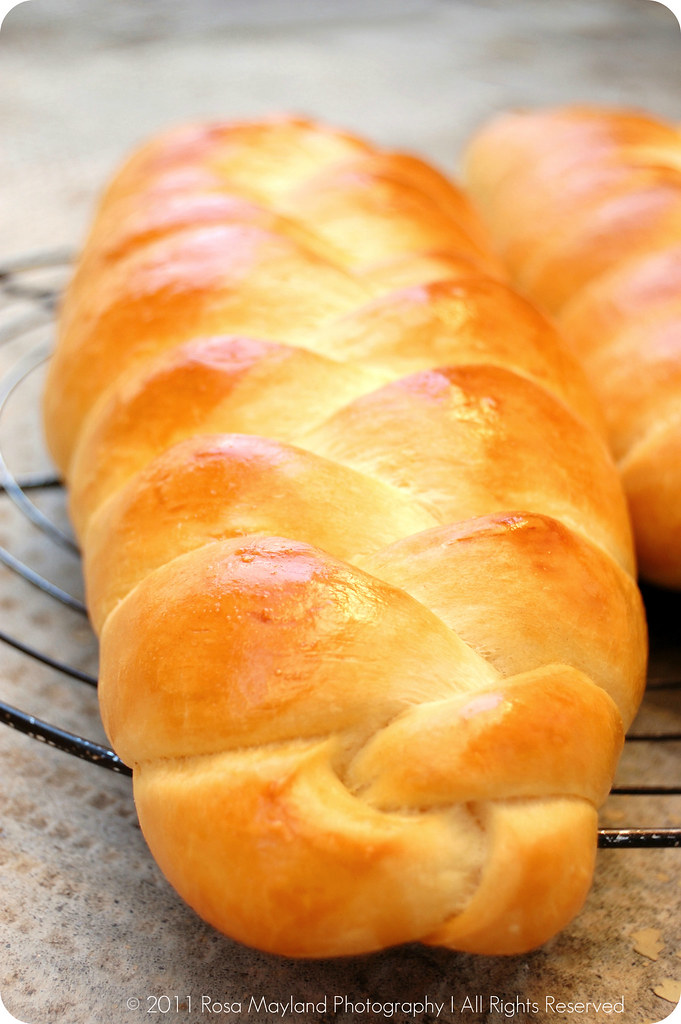
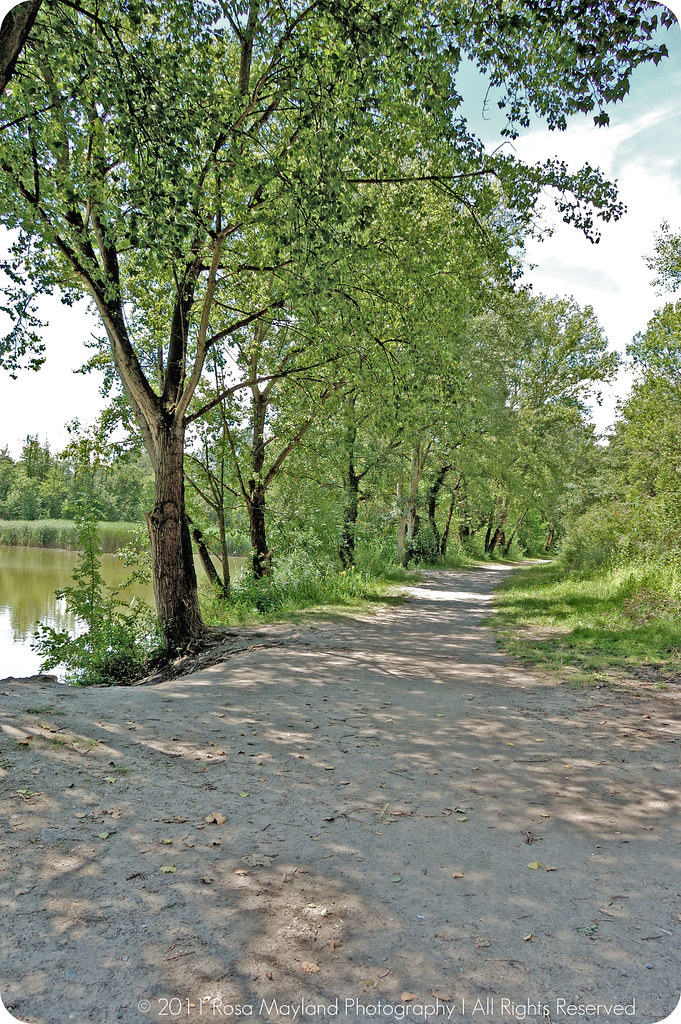
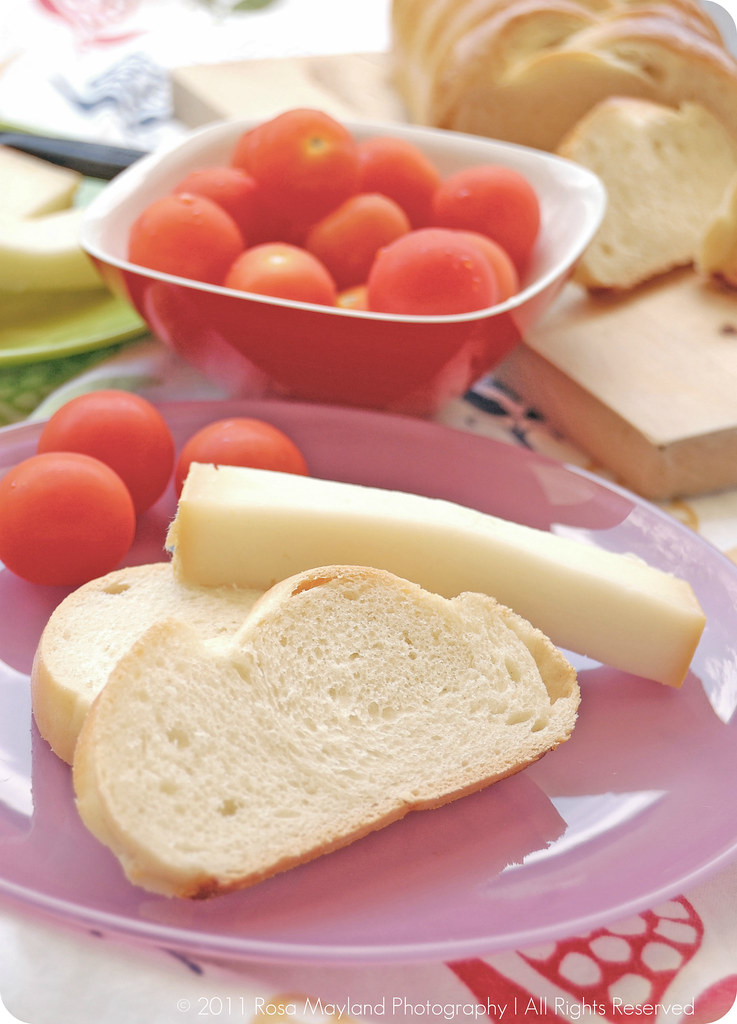
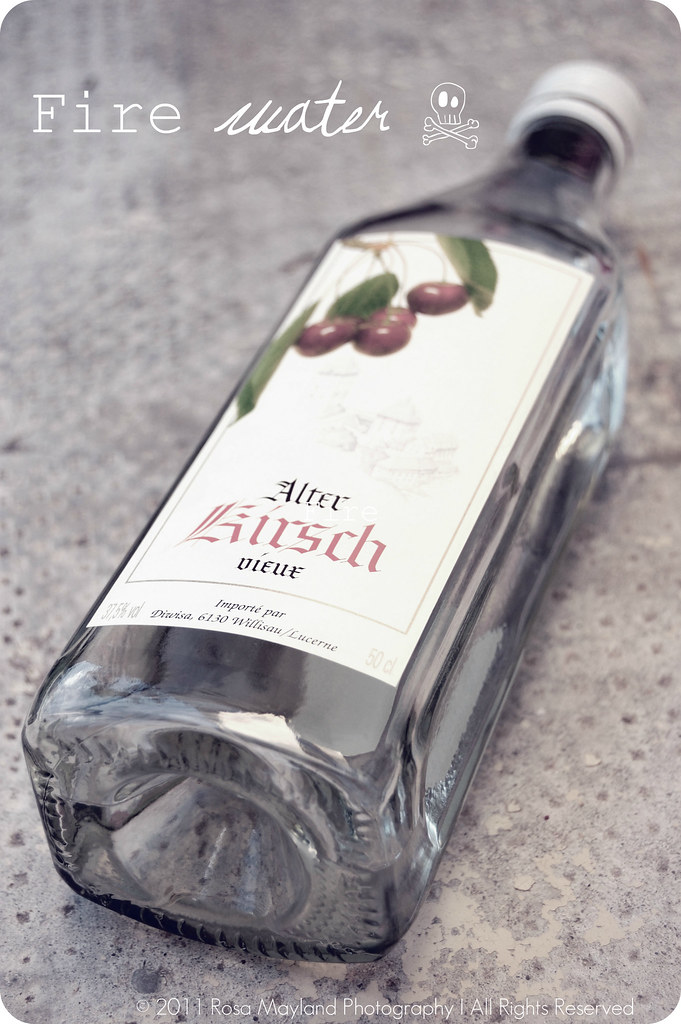
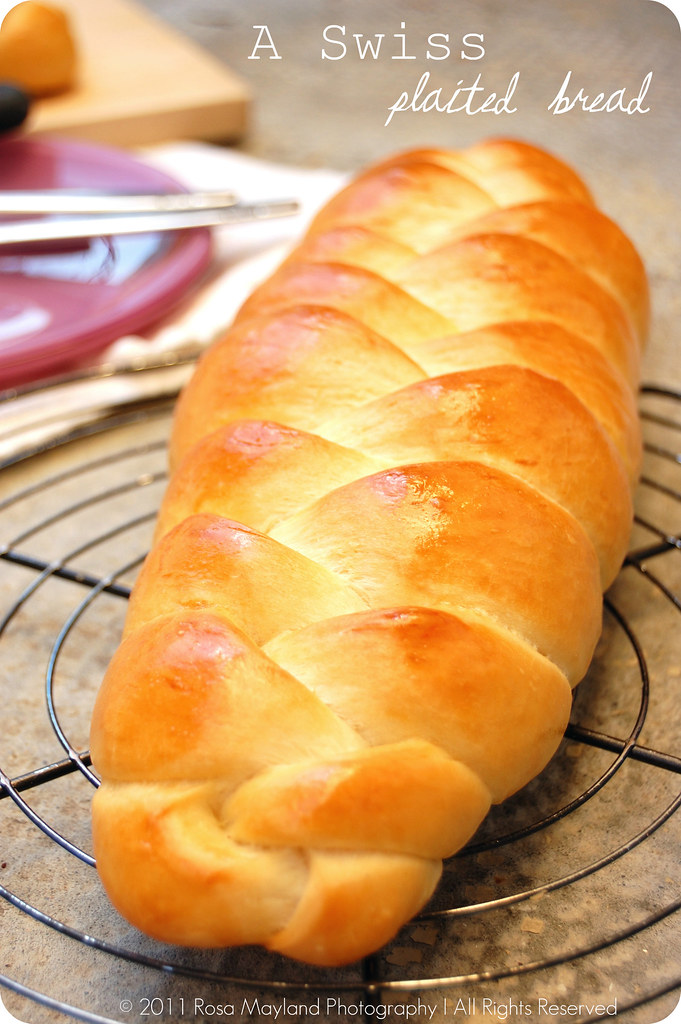

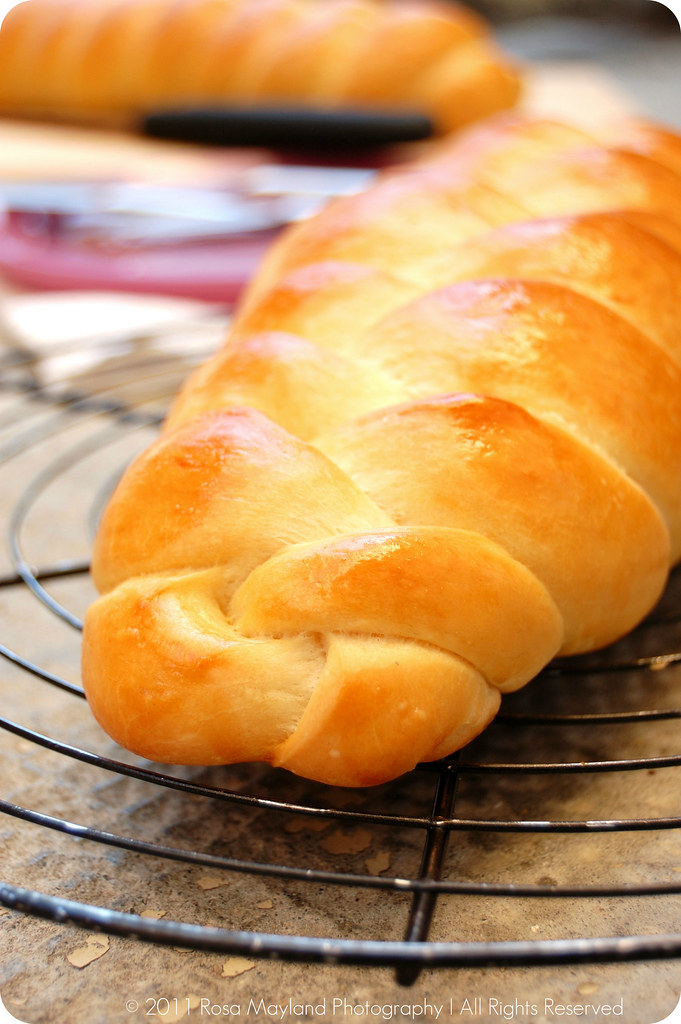
Magnifique la tresse!
ReplyDeleteMagnifique... tout!
Wow, this Butterzopf looks absolutely perfect, Rosa!
ReplyDeleteMagnifique... ta brioche tressée va me faire renouer avec le petit déjeuner! Bises et bonne fin de semaine...
ReplyDeleteMais qu'elle est belle !!!! j'ai beaucoup de mal à tresser les brioches et je suis très admirative ! quelle jolie ambiance avec ces superbes photos !
ReplyDeleteI don't think I can even pronounce this correctly, so if you may permit, I'll call it a bread.
ReplyDeleteIt looks like artisan bread. It looks beautiful and delightful against the red tomatoes.
Beautiful pics..
Wow Rosa! This bread looks fantastic! I bet it tastes delicious. Looks professional!
ReplyDeleteLove the shot of the flower with the bug :)
Wow! That braid is absolutely perfect. Love that it has kirsch in it. Thank you for sharing!
ReplyDeleteI love that you decided to share a recipe from Switzerland. I never see many around. This bread looks amazing. I'm gonna bookmark the recipe. Thanks Rosa!
ReplyDeleteMagda
elle est vraiment magnifique cette tresse, elle a juste l'air parfaite
ReplyDeleteRosa, if this bread tastes as good as it looks...that's amazing! I wish I could bake a loaf that looked like that. Your photos as always are stunning.
ReplyDeleteJe suis très contente que tu nous présentes des spécialités suisses, quelle bonne idée. Ce pain a l'Air absolument fameux. J'ai bien hâte de l'essayer!
ReplyDeletebutter can make everything taste better...your tresse looks mouthwatering!
ReplyDeleteI wish you a nice w-e
I really need to get over my fear of yeast so that I can make breads like this! It would be perfect with my morning coffee and jam.
ReplyDeleteLoved reading about the history too!
absolutely perfect,i love your swiss recipe
ReplyDelete!:)
elle est superbe ta tresse, elle me rapelle les vacances en Suisse !
ReplyDeleteWhat a beautiful braided bread. If you were in France I would say it would be the star in the window of a boulangerie.
ReplyDeleteSam
Love this golden bread (and the "fire water"!) but most of all I love that crazy red bug! Gorgeous shot.
ReplyDeleteGreat photo, nice golden crust, you shaped it really well
ReplyDeleteAbsolutely WONDERFUL!!! Looks Delicious :)
ReplyDeleteMagnifique ta brioche! Avec de la confiture maison c'est un délice!
ReplyDeletesei molto brava con i dolci ma con i lievitati sei davvero bravissima ogni tua ricetta mi incanta.
ReplyDeleteComplimenti e felice fine settimana!
I bet this bread would go really well with a bowl of piping hot chicken soup!
ReplyDelete*tingles at the thought of it*
Your food and photography are just lovely!
ReplyDeleteI always see you comment on my dear friend Marla's site.
:)
Truly magnificent. The bread looks like a work of art! The photos are breathtaking
ReplyDeleteThat looks perfect. Fabulous photos too.
ReplyDeleteI really want to dive into that buttery goodness Rosa..it looks divine! And thank you for sharing some interesting facts about Switzerland.
ReplyDeleteWhat a perfect braid! what a glorious shade of golden brown on the crust!
ReplyDeleteI would so love to eat a warm slice of that, with nothing, just savor every bite.
I'm glad you shared this recipe with us. I love your photos,too!
ReplyDeleteVom Backen lasse ich lieber die Finger und kaufe einen Butterzopf. So schön sind die gekauften aber nie.
ReplyDeleteIncredible this Swiss bread - with a spread butter and jam is absolutely perfect :)
ReplyDeleteGreat weekend!
Gera
Fantastic creation.As you know by now once you start making your own you are sold for life;)Great pics
ReplyDeleteBeautifully braided bread...
ReplyDeleteI love the photo of the red bug too
I don't think we know much about Swiss food other than cheese, rosti and fondues! Bring on the Butterzopf and other Helvetica delights!
ReplyDeleteHey Rosa! Really enjoyed reading your post on Switzerland and it's cuisine!
ReplyDeleteEven in India we had a similar tradition of wives killing themselves when their husband's die by jumping alive into the fire in which the body is being burnt! It's strange to know that it didn't exist only in India!
Bread looks great! I really want to learn to bake different breads and your blog seems to be the perfect place to learn!
I'm so excited about your new series, Rosa! Switzerland is a magnificent country and I look forward to reading more about its cuisine. This beautiful bread is the perfect place to start!
ReplyDeleteSublime brioche, qui me remémore celles que j'ai maintes fois mangé en Suisse, très différentes des françaises. Miam!
ReplyDeleteBon week-end Rosa :)
So beautiful. I've made braided breads a million times and they never look half as pretty. Looks so plump and glossy, yum!
ReplyDeleteWow, these photos are gorgeous!
ReplyDeleteThis bread looks irresistible! The golden exterior and tender crumb are lovely, and the kirsch in the dough sounds great. Well done!
ReplyDeleteI've never heard of this, Rosa. What a perfect loaf and how fascinating it include kirsch in the ingredients.
ReplyDeleteLovely!
La pain est tres belle avec la fromage. Je t'aime la kirsch. I once had an eclair with kirsch flavored creme in Paris-I have never been able to duplicate that recipe.
ReplyDeleteIt looks great, so tasteful!
ReplyDeleteI love buttery braided loaf! They make a perfect breakfast.
ReplyDeleteThis looks so beautiful Rosa!
ReplyDeleteWaw! Très bien réussi! Belles photos
ReplyDeleteMagnificent looking bread Rosa. I am sure I will like this one.
ReplyDeleteBeautiful breaded brioche and such an interesting background story ; I also love the photo of the trees. The lack of butter in the dough reminds me of a Lebanese brioche called kaak bel-haleeb (haleeb) meaning milk, which is made for Easter and has milk and sugar but no eggs.
ReplyDeleteSuperbe brioche tressée !
ReplyDeleteElle me tente beaucoup, avec une tasse de thé...
Et je ne savais pas que les Suisses avait un équivalent au Marmite/Vegemite !
What a beautiful bread, Rosa. Such an interesting 'story' behind it too. Love the photo of the little bee!
ReplyDeleteDelicious looking and very well photographs braided bread! And it is great to know more about Switzerland, thanks!
ReplyDeleteImpressive braid of loaf!
ReplyDeleteElle est vraiment magnifique, la mie semble avoir une densité très différente de celles que j'ai déjà faites, je pense qu'elle sera au programme de mon prochain épisode boulange!
ReplyDeleteBravo pour cette belle tresse.
ReplyDeleteA noter que l'ajout d'alcool dans la recette n'est pas du tout indispensable. J'ai plein de recettes "suisses", que j'auris pu te communiquer, aucune n'en mentionne.Mais c'est une variante intéressante.
Avis à nos amis français, la tresse au beurre n'est pas une brioche, au sens propre du terme, mais un pain.
;-)
Bonne semaine Rosa
great to hear about your next blogging series, lovely bread loved learning the history.
ReplyDeleteHow beautiful is that! Plus, anything with "butter'' prominently in the name has just got to be incredible. ;)
ReplyDeleteWhat a beautiful bread!
ReplyDeleteNext month I'm visiting your diving kingdom & I'm so looking forward to relishing the varied cuisine of the country. The bread looks simply perfect.
ReplyDeleteNot familiar with Swiss food, thanks for the intro! So beautiful!
ReplyDeleteBeautiful Butterzopf ... looking at those pics I knew why you tell that this bread alone taste awesome and don't need any accompaniment!
ReplyDeleteRosa, whatever the origin, this is one gorgeous bread and a recipe I will try. Seems a less complicated version of a brioche which is great! I have had this book for a long time but I trust your adaptation more so will follow your recipe. How can I possibly NOT make a bread as stunning as this?
ReplyDeletemarvellous cliks..'
ReplyDeletelove ur perfection..
Tasty Appetite
That is one gorgeous loaf of bread! perfect braid, perfect texture...just ideal all around!
ReplyDeleteTres tres belle Rosa - la photo est splendide aussi. Celle-ci, je vais certainement l'essayer.
ReplyDeleteButter-Braid, je ne sais pas pourquoi, ca me fait penser aux Hobbits.
i lovetrhe colour of the bread. awesome delicious!
ReplyDeleteMagnifique ! quelle cuisson parfaite et quel doré !! aussi beau que tes bien jolies photos... bises
ReplyDeleteMarvelous! Absolutely fabulous looking bread ~ love the neat braids n the golden color of the crust, such a beauty! Thanks for sharing Rosa.
ReplyDeleteUS Masala
What a great story and mouth watering pictures! You make it look so easy :)
ReplyDeleteLa photo est tout simplement magnifique!
ReplyDeleteQuelle belle tresse!!!
That looks amazing and not mad amount of butter in it....I am very tempted to try this....perfect for a saturday breakfast...
ReplyDeleteI love Eric Treuille! Thank you for sharing the history behind this speciality - it's fascinating to discover new types of baking. Plus, the loaf looks delicious.
ReplyDeleteWhat a beautiful bread, Rosa! Makes me wish I could have wheat!
ReplyDeleteThat glaze is gorgeous! Love how you baked it .. i am horrible when it comes to baking bread .. so should I say pretty looking bread.
ReplyDeleteA gorgeous bread! I like the addition of Kirsch, yum!
ReplyDeleteRosa, beautiful braided bread. The texture look so soft and light. Gorgeous pictures as always.
ReplyDeleteHave a great week ahead :-)
That looks absolutely delicious Rosa! So full of buttery goodness :D
ReplyDeleteThis braid looks amazing Rosa..what a neat & perfect braid!! I love the beautiful color from baking!
ReplyDeleteHave a fab week ahead!
Et manger la tresse en défaisant chaque mèche... C'est un long travail, mais c'est tellement meilleur ! Bises !!!
ReplyDeleteGreat Recipe, must give it a try this coming weekend :)
ReplyDeleteOne of the first European countries I visited was Switzerland and since then, I've visited more than 5 times and staying for weeks each time. It never fails to wow me each time I'm back. I've never tried this before, but I did try some other challah type bread and it was fantastic, especially with all the lovely cheese you have in your country.
ReplyDeleteI'm definitely glad I stumbled here and will be keenly awaiting the next in your series :D
This bread sounds awesome! Love all that butter and the Kirsch.
ReplyDeleteThe bug is sweet :)
I remember having this for breakfast on a Sunday in Geneva, and have been dreaming of it since then. I am positively surprised it has so little butter. I remember eating a version with bits of smoked ham in it: could it be the same dough? It was awesome.. Thank you for this recipe, will try for sure!
ReplyDeleteComme elle est esthétique cette tresse au beurre, sa dorure est juste parfaite !
ReplyDeleteThat braided braid is simply stunning! Break me off a piece of that. ;)
ReplyDeletelook absolutely beauty Rosa, gloria
ReplyDeleteMagnificent loaf of challah bread ...such perfect crust. Must taste heavenly!!
ReplyDeleteThat looks so nice and light and fluffy and good! Excellent braids!
ReplyDeleteAbsolute perfection.
ReplyDeleteMiam miam ... c'est beau et booon! Moi qui suis malade en ce moment, je goûterai bien à ce pain/brioche !
ReplyDeleteWhat a wonderfully informational post on your beautiful place of residence. This braided bread sounds delicious for breakfast, and your pictures are (as always) absolutely stunning my dear.
ReplyDeleteThis sounds so delish! I love your texture description and the addition of kirsh, you really have me craving some of this with a spot of jam for breakfast!
ReplyDeleteWhat a spectacular bread, Rosa! Love when you introduce me to something new =)
ReplyDeletecette tresse est terriblement tentante avec cette mie aérée, ça se voit qu'elle est à tomber!
ReplyDeletePerfectly braided and gorgeous. Well done!
ReplyDeleteoh wow this looks fantastic. Like challah but with kitch how cool is that?!
ReplyDeleteYour braided bread looks perfect and so neat. delicious :)
ReplyDeleteHave a nice day.
Elle est magnifique! ça fait des mois que je veux essayer de préparer une tresse, alors ta recette tombe à pic!
ReplyDeleteBon week-end :-)
Oh so beautiful :) You have such a stunning blog Rosa, truly inspirational
ReplyDeleteWow, Rosa, what an extraordinary twist on the usual challah recipe! This looks absolutely beautiful, and I am so intrigued by the use of kirsch in the bread. Congrats, also, on your radio interview! :)
ReplyDeleteOne think that I like about your blog, you do making lots of homemade bread. They all are great recipes. It inspires me to make more of homemade bread.
ReplyDeleteThat bread is amazing!!! Love the braid!
ReplyDeleteC'est une bonne idée de nous faire découvrir des recettes de Suisse. C'est une manière pour mieux nous faire connaître ce beau pays. Cela donne envie d'en savoir plus...
ReplyDeleteBonne journée. Nat
LOVELY!
ReplyDeleteYour braided look fantastic!!
ReplyDeleteThis bread is lovely, and the crumb is so soft and wispy!
ReplyDeleteQUESTION: Is there a non-alcoholic substitute for the Kirsch?
Bravo Rosa ! je suis fan, tu t'en doutes...je vais tester dès que possible !
ReplyDeletebelle soirée (au frais pour toI ?)
bises
Rosa, I love that you will be sharing Swiss recipes with your readers! Love this bread too! xo
ReplyDelete